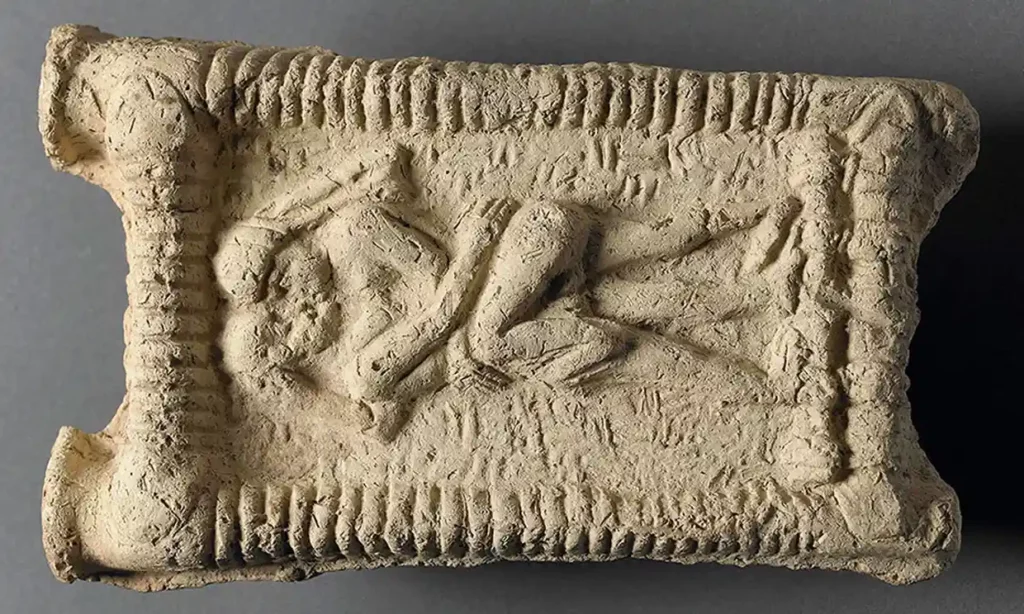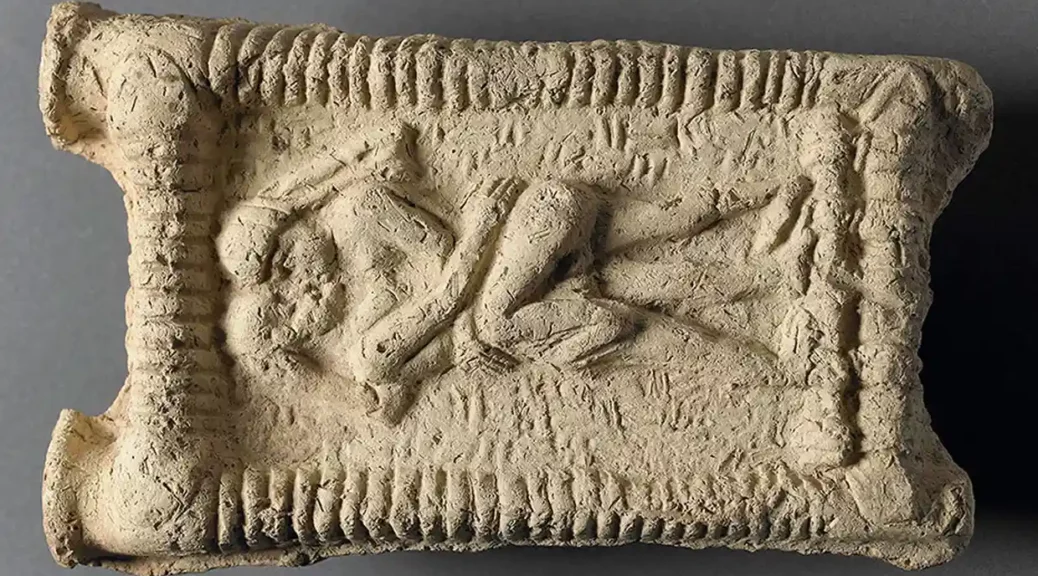First records of human kissing may date back 1,000 years earlier than estimated

Humanity’s earliest record of kissing dates back about 4,500 years in the ancient Middle East, 1,000 years earlier than previously thought, according to researchers.
Scientists have highlighted evidence that suggests kissing was practised in some of the earliest Mesopotamian societies and documented in ancient texts from 2500BC that have been largely overlooked.
In an article published in the journal Science, researchers also cited evidence that kissing may have contributed to the spread of orally transmitted diseases such as cold sores.
Although research had suggested that friendly or familial kissing was a common behaviour between humans across time and geography, romantic-sexual kissing was not thought to be culturally universal.
Researchers said the findings suggest kissing was considered an ordinary part of romantic intimacy in ancient times across many cultures and did not originate in a specific region, as earlier research had proposed.
A previous hypothesis suggested that the earliest evidence of kissing came from what would be modern-day India in 1500 BC.
Ancient Mesopotamian texts suggest that kissing was something that married couples did, though kissing was also seen as a part of an unmarried person’s desires when in love.
Dr Troels Pank Arbøll, an expert on the history of medicine in Mesopotamia at the University of Copenhagen in Denmark, said: “In ancient Mesopotamia, which is the name for the early human cultures that existed between the Euphrates and Tigris rivers in present-day Iraq and Syria, people wrote in cuneiform script [wedge-shaped marks] on clay tablets.
“Many thousands of these clay tablets have survived to this day, and they contain clear examples that kissing was considered a part of romantic intimacy in ancient times, just as kissing could be part of friendships and family members relations.
“Therefore, kissing should not be regarded as a custom that originated exclusively in any single region and spread from there but rather appears to have been practised in multiple ancient cultures over several millennia.”
Studies have shown that bonobos kiss with a romantic-sexual purpose and chimpanzees engage in platonic kissing to manage social relationships. As the closest living relatives to humans, scientists said these practices hint at the ancient presence and evolution of the behaviour in humans.
The researchers also said kissing may have unintentionally played a role in the transmission of pathogens, such as herpes simplex virus 1 (HSV-1), which causes cold sores and diphtheria, a highly contagious bacterial infection.
It is thought that bu’shanu, a disease described in ancient medical texts, could be the HSV-1 infection. It was found in and around the mouth, which is one of the main signs of the herpes virus.
Dr Arbøll said: “There is a substantial corpus of medical texts from Mesopotamia, some of which mention a disease with symptoms reminiscent of the herpes simplex virus 1.”
However, researchers said these texts cannot be read at face value because they were influenced by a variety of cultural and religious concepts of the time.
